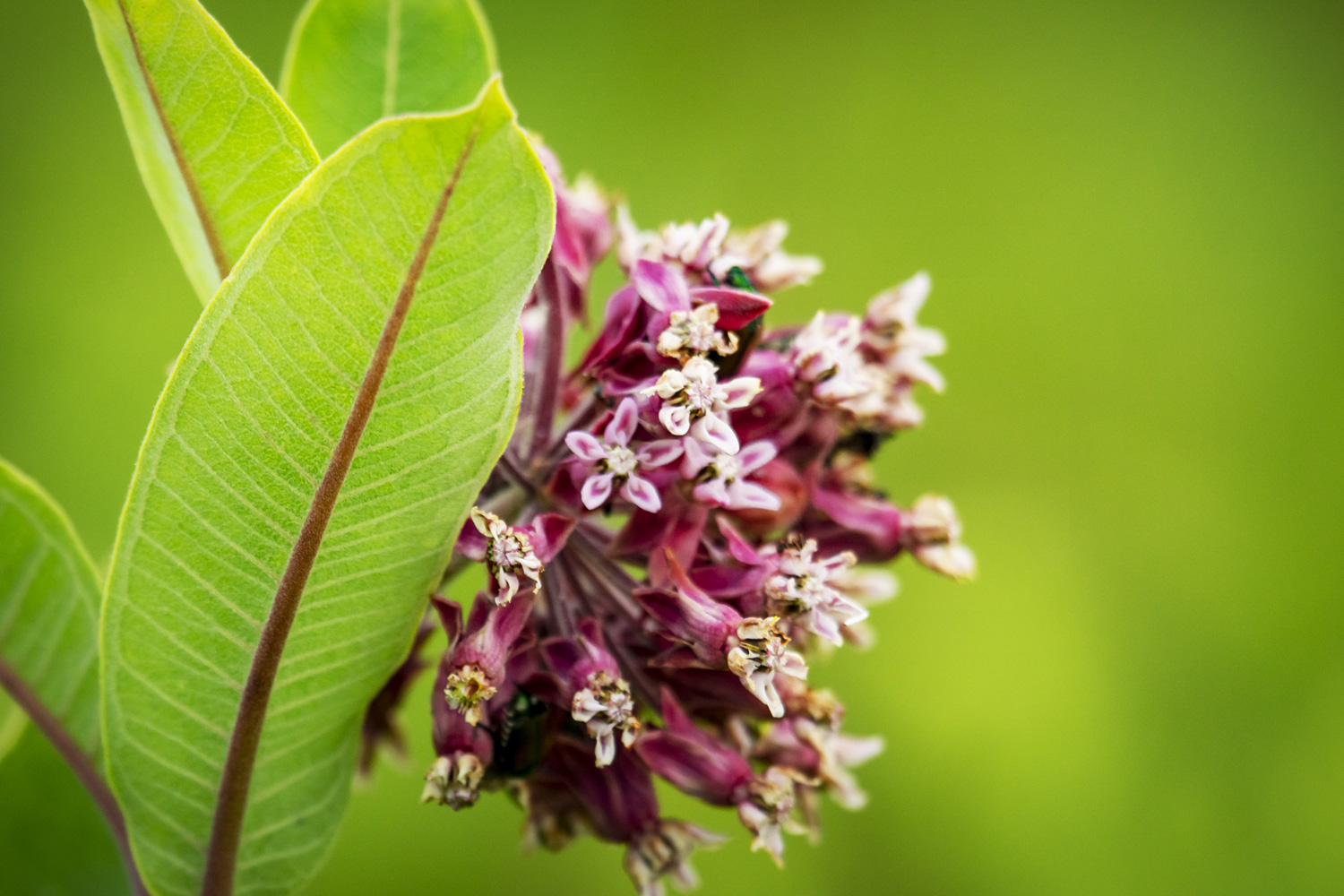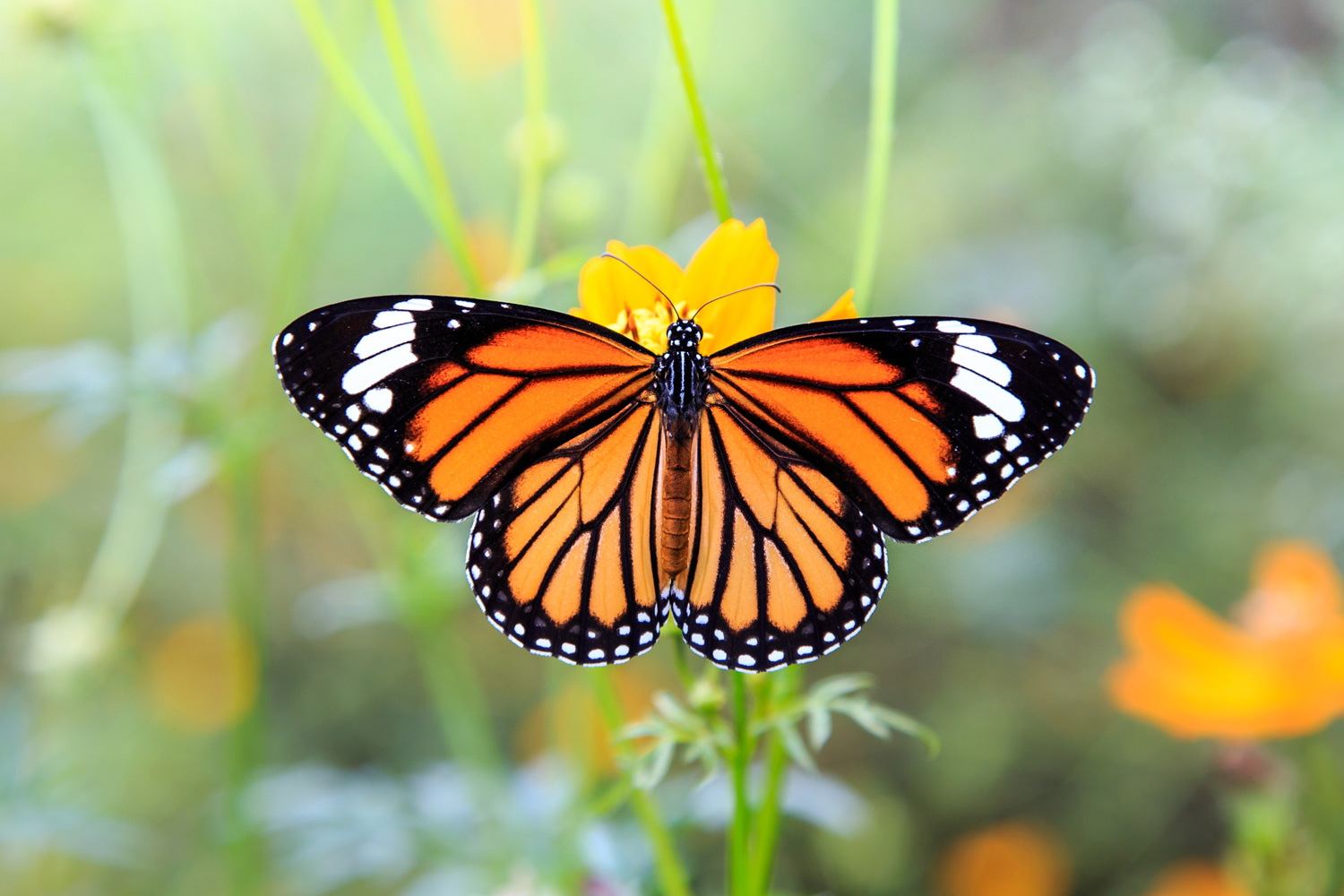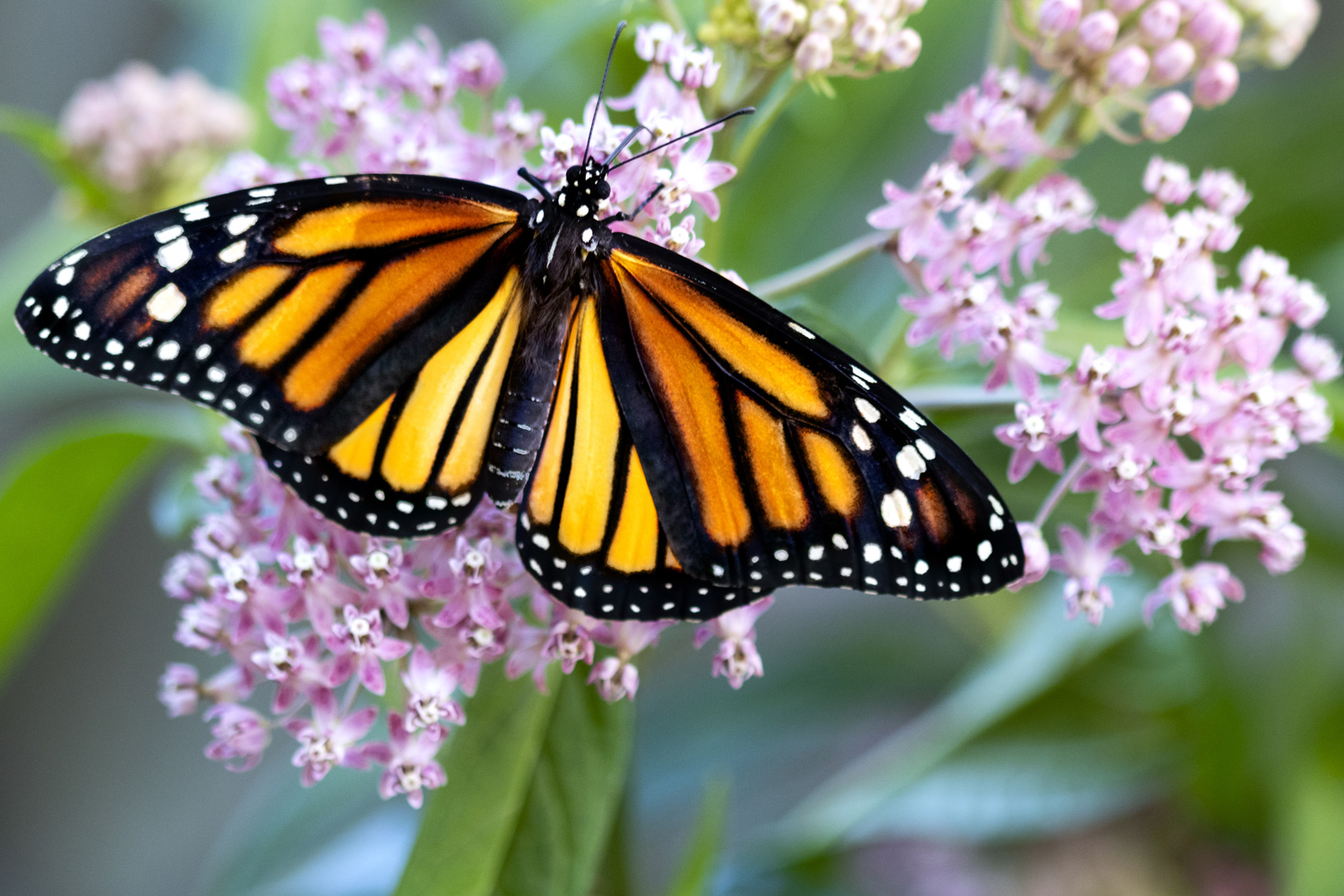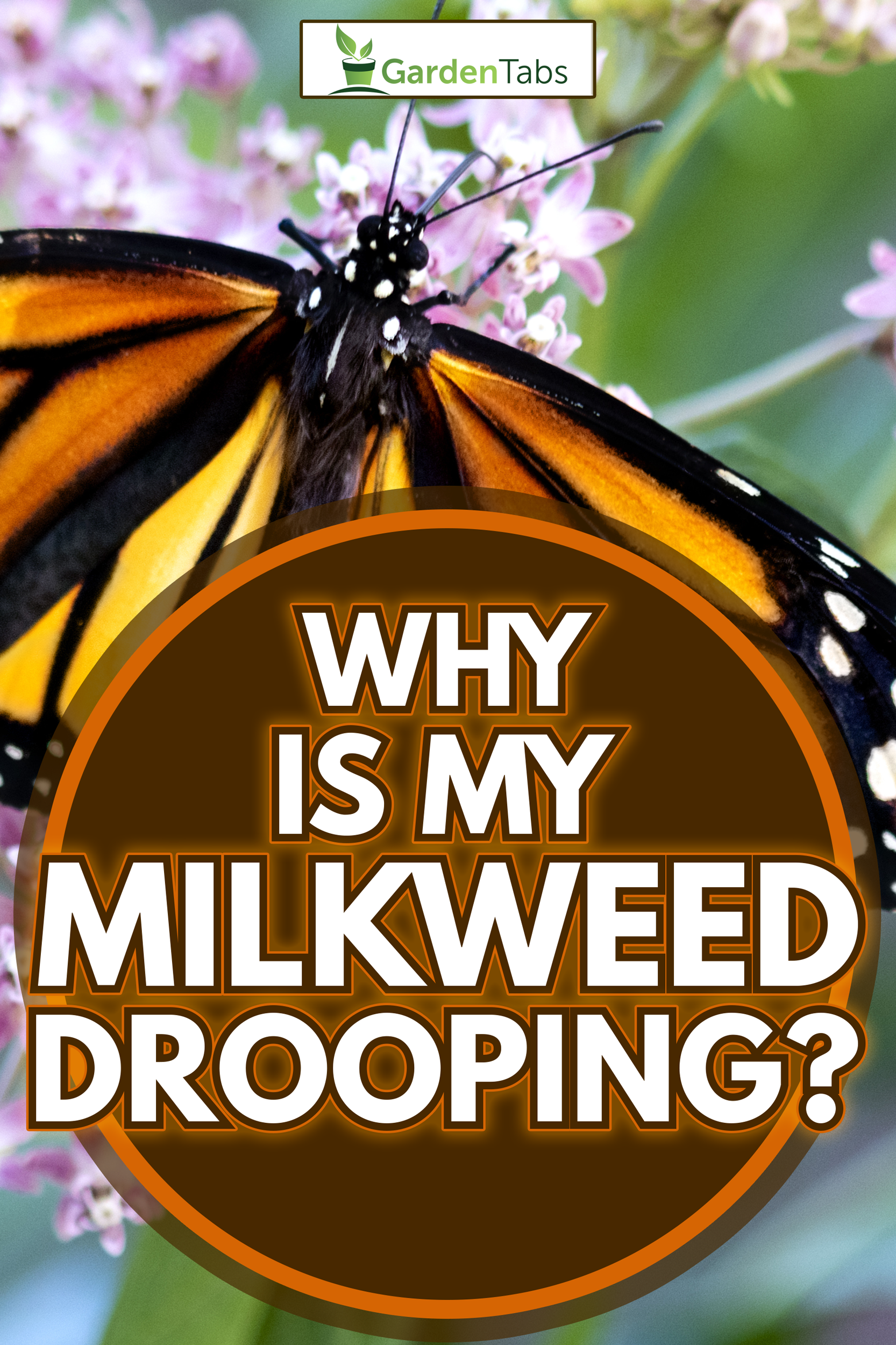We cannot emphasize the significance of milkweed enough because of its importance in the ecosystem.
Monarch butterflies, which are natural pollinators, rely on them for survival. We have researched every aspect you need to know about milkweed and its correlation with nature.
To those who have ventured into cultivating milkweed and noticed its leaves taking on a somewhat droopy demeanor, fret not. Milkweed, though resilient, has its distinct preferences.
One possible reason for drooping milkweed is lack of water. Milkweed plants require regular watering, especially during hot and dry periods.
If the soil around your plant feels dry to the touch, it may be a sign that your milkweed is not receiving enough water.
Unlock the secrets of a thriving garden and play an active role in supporting our delicate ecosystem. Scroll below to learn more and make a difference today!
Milkweed: An Overview

Milkweed is a flowering herb with about 140 species all across North and South America. It excretes milky fluids known as cardenolides, which are toxic to humans and animals but serve as food for some butterflies.
Best Milkweed Varieties According To Region
Northeast Region
- Common Milkweed
- Swamp Milkweed
- Butterfly Weed
- Whorled Milkweed
- Poke Milkweed
South Central Region
- Green Antelopehorn Milkweed
- Antelopehorns Milkweed
- Zizotes Milkweed
Southeast Region
- Butterfly Weed
- Whorled Milkweed
- White Milkweed
- Aquatic Milkweed
- Sandhill/Pinewoods Milkweed
Western Region
- Mexican Whorled Milkweed
- Showy Milkweed
Arizona
- Butterfly Weed
- Antelopehorns Milkweed
- Rush Milkweed
- Arizona Milkweed
California
- Mexican Whorled
- Showy Milkweed
- Desert Milkweed
- California Milkweed
- Heartleaf Milkweed
- Woolly
- Woolly Pod Milkweed

Milkweed: Vital Role and Impact
Milkweed's unique star-shaped petals, varying in colors like yellow and pink, have a distinct method of pollination. Instead of individual pollen grains, they possess pollinia.
This unique mechanism often traps smaller insects, while stronger ones like bees aid in pollination.
Critically, monarch butterflies and their larvae rely heavily on milkweed for survival. A decline in milkweed can result in a significant drop in their populations.
However, caution arises with the tropical milkweed in the US. This non-native variant can disrupt the diet of monarchs and increase the risk of harmful parasites.
Unlike native milkweeds that naturally die in winter, thereby controlling these parasites, tropical milkweed persists, posing risks to monarchs.
In essence, milkweed is pivotal for its role in supporting monarch butterflies and its historical medicinal use and industrial applications.
NOTE: Plant milkweeds native to your region to save monarchs from extinction and not disrupt the balance of nature and the ecosystem.
Common Signs of Milkweed Drooping
If you notice that your milkweed plant is drooping, it can cause concern. Here are some common signs of milkweed drooping:
Wilting or Drooping Leaves
The leaves of a robust milkweed plant are expected to stand firm and upright. Drooping or wilting suggests there's an issue at hand.
Yellowing Leaves
When the leaves start turning yellow, it's often a sign of stress or a possible disease affecting the plant.
Stunted Growth
A healthy milkweed should showcase steady growth. Any stunting is a clear indication that something's amiss.
Brown or Black Spots on Leaves
Such spots often allude to a fungal or bacterial infection. It's crucial to monitor any such changes in the leaves.
Insect Infestation
Milkweed is no stranger to pests. Insects like aphids and beetles can lead to drooping or wilting of the leaves.
How to Treat Drooping Milkweed
If you've noticed that your milkweed plant is drooping, it's essential to take action immediately to prevent further damage. Here are some steps you can take to treat your drooping milkweed:
Watering Techniques
One of the most common reasons for drooping milkweed is improper watering. To ensure your milkweed gets the right amount of water, water it deeply once a week.
Avoid watering it too frequently, as this can lead to root rot. Also, ensure the soil is well-draining to prevent water from pooling around the roots.
Proper Sunlight Exposure
Milkweed plants require plenty of sunlight to thrive. If your plant is drooping, it may not be getting enough sunlight.
Make sure to place your milkweed in a location that receives at least 6 hours of direct sunlight daily. If your plant is shady, consider moving it to a sunnier spot.
Pest Control Methods
Pests can also cause milkweed plants to droop. Take action immediately if you notice any signs of pest infestation, such as holes in the leaves or visible insects.
You can use natural pest control methods, such as spraying the plant with neem oil.
Improving Soil Quality
Poor soil quality can also cause milkweed to droop. To improve the soil quality, consider adding compost or other organic matter to the soil.
This will help improve soil drainage and give the plant the nutrients it needs to thrive.
You can treat your drooping milkweed and help it thrive again! Remember to monitor your plant regularly and take action right away if you notice any signs of drooping or other issues.
Northeast Region
- Common Milkweed
- Swamp Milkweed
- Butterfly Weed
- Whorled Milkweed
- Poke Milkweed
South Central Region
- Green Antelopehorn Milkweed
- Antelopehorns Milkweed
- Zizotes Milkweed
Southeast Region
- Butterfly Weed
- Whorled Milkweed
- White Milkweed
- Aquatic Milkweed
- Sandhill/Pinewoods Milkweed
Western Region
- Mexican Whorled Milkweed
- Showy Milkweed
Arizona
- Butterfly Weed
- Antelopehorns Milkweed
- Rush Milkweed
- Arizona Milkweed
California
- Mexican Whorled
- Showy Milkweed
- Desert Milkweed
- California Milkweed
- Heartleaf Milkweed
- Woolly
- Woolly Pod Milkweed
Ways to Improve Milkweed Growth and Development
Mulch
A mulch is a material layer, such as dried leaves, tree bark, twigs, and the like, placed on top of the soil around your plant. It functions to retain moisture, regulate temperature, and prevent weed growth.
Not all varieties of milkweed require mulching, while other species benefit from moist retention. Common milkweed grows well even without mulch, while swamp milkweed thrives better with a light organic layer.
Fertilizers
Milkweed is highly adaptable and can grow and tolerate almost all soil conditions, including infertile and rocky environments. Common milkweed plants do not generally require fertilizing. However, young growing plants can benefit from fertilizers with phosphorus and nitrogen content.
Additional Insights About Milkweed
Cardenolides in Milkweed Plants
A cardenolide is a chemical compound classified as a steroid. They are contained in several plants, including milkweed, and act as a defense mechanism due to their toxicity.
Most insects, including monarch butterflies, are immune to its effect and absorb the substance to deter parasites and predators.
Put simply; cardenolides benefit monarchs by repelling and killing organisms threatening their survival. The continued existence of monarchs relies heavily on the presence of milkweeds.
Cardiac Glycoside in Milkweed Plants
Cardiac glycoside is a chemical that affects humans' heart, digestive, and nervous systems. It is the active ingredient in most medicines used to treat heart-related conditions.
Milkweed is categorized as poisonous since all parts of the plant contain cardiac glycosides, the highest concentration of which is found in the latex fluid.
Exposure and contact can lead to skin and eye irritation. At the same time, more severe symptoms from ingesting the plant include abdominal pain, nausea, weakness, and confusion. Severe effects can lead to seizures and changes in heart rhythm.
It is best to take caution when tending to your milkweeds. Wearing gloves and goggles is good practice.
Monarch Butterflies

Monarch butterflies are among nature's most prolific pollinators and contribute considerably to the survival and sustainability of entire ecosystems. Their movement and migratory patterns profoundly affect plant growth and proliferation.
As the butterflies feed on nectar, pollen is attached to their bodies and dispersed among other flowers, enabling them to make seeds. This is the basic process by which plants reproduce naturally.
The past decades have caused an alarming decline in monarch populations. 80 to 90 percent of the species have perished in the last 40 to 50 years. The primary reason is human activity and development, which significantly impact the conditions necessary for the monarch butterfly's survival.
What Caused The Decline Of Monarch Butterflies?

Habitat Loss
Rapid development, infrastructure, and residential expansion have drastically lessened the habitat for monarchs to survive and reproduce. Large tracts of natural land have been converted to urban conditions with sparse vegetation and plant life.
Monarchs rely heavily on natural habitats that encourage and benefit their propagation; losing an ideal environment leads to considerable species loss.
Pesticides
A drastic increase in the human population requires massive production of food products. Large-scale farming affects butterflies and other insects and pollinators directly through toxins present in pesticides.
The residual chemicals found in the soil, water, and the general environment create long-term effects that disrupt monarchs' natural reproduction. The loss of milkweed plants due to herbicide use in agriculture and households dramatically contributes to the decline of wild pollinators.
The butterflies tend to migrate to less or nontoxic regions, which results in the depletion of plants in the abandoned areas.
Global Warming
Climate change has altered monarchs' reproductive and migratory cycles by disrupting the overwintering process. Insects have different adaptive methods to survive cold weather.
Some live in tropical climates. Others have evolved to thrive in freezing temperatures while monarchs migrate to other regions during the cold season, known as overwintering. Butterflies do not reproduce and remain inactive during this period and can extend their lifespan up to nine months.
After winter, breeding adult monarchs need large amounts of nectar to reproduce and usually live for about a month. Elevated temperatures have resulted in shorter cold seasons and, eventually, less overwintering periods.
Interestingly, experts study butterfly presence and behavior based on the abovementioned factors to determine the ecological environment's health, balance, and sustainability.
To get more knowledge, read these articles:
31 Flowers That Need Little Water
Where To Place A Bee Hotel In The Garden

